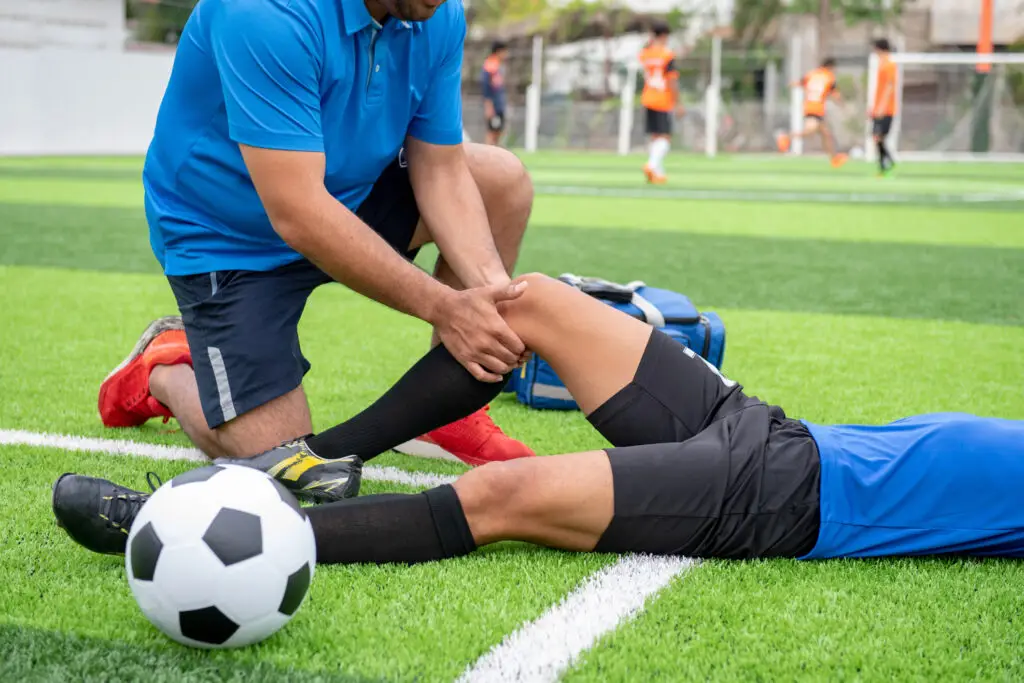Athletes understand that if they want to perform at their peak, they must remain physically and mentally healthy, this is also key to minimizing injuries. It is equally important to build both physical strength as well as mental confidence that the body is capable of performing at a certain level. Without that level of confidence, mistakes can be made that result in devastating injuries.
It will also impact how a person performs when they are under stress during an intense competition. Preparing the body physically builds both strength and confidence that will help to minimize the risk of injuries or setbacks.
Athletes can take part in programs that train them to minimize and prevent injuries in the first place. One example of this is Sports Care Institute’s ACL Injury Prevention Program, which combines several different factors to help reduce risk of injury from the very beginning. The program includes evaluation techniques, strengthens balance, improves acceleration as well as deceleration, builds endurance and maximizes power. Every element works to strengthen the body and build confidence in the athlete that will help them to focus on the competition and put their best foot forward.
“Our therapists develop exercise programs tailored to specific individual needs and identify at-risk athletes by these evaluations,” said Ricardo Costa, director of physical therapy at the SportsCare Institute.
These programs include many different types of exercises and techniques that offer a more rounded workout. Strengthening the body in several ways is more beneficial than working with only one type of program. Costa notes that studies have shown that a six-week pre-season training program, followed by two or three regular season sessions per week, can significantly reduce the risk of ACL injuries by as much as 75 percent.
When an injury does occur, physical therapists focus their efforts on creating an environment where the injured area has everything it needs to hasten the healing process. Target exercises, for example, work the area without irritating the injury. This reduces inflammation and brings oxygenated blood to the area and encourages the injury to heal much faster. By focusing on the main area of the injury, strength returns much quicker and the risk of excessive amounts of scar tissue is minimized.
While strengthening the area is important, it is also vital that the athlete have full range of motion. This is a gradual process and should not be rushed. Increasing range of motion helps the athlete get to the level of performance they were at prior to the injury and plays a major role in minimizing injuries to the same area in the future.
Being able to restore that range of motion in a timely fashion, while supporting it with proper strength building exercises will provide an excellent indicator as to when the athlete will be able to return to the field. Restrictions on range of motion, whether they be physical or mental, can increase the risk of re-injuring the area and causing lasting damage.
When proper training methods and training tactics are used to help strengthen an injured area, the athlete will also regain the confidence they need to compete successfully. When an athlete is injured, the one thing that settles in his or her mind is, “What if it starts hurting during a game?” Any twinge or sensation can immediately cause them to second guess their movements or alter the way they handle a situation, causing them to overcompensate or move in unnatural patterns.
This not only stresses the body, it dramatically increases the risk of injury. Proper training methods restore the athlete’s confidence by minimizing injuries, allowing them to have the peace of mind to walk onto the playing field without fear or trepidation.
The key to helping the athlete regain their confidence, is rebuilding strength and re-establishing trust in the injured area. At Sports Care Institute, trainers understand the connection between healing and confidence. In order for an athlete to be fully healed, they must have the confidence to trust that the injured area is back to normal.
Trust that allows them not to worry or second guess their movements when their thoughts should be focused more on what is going on around them. Exercises that allow for a complete healing also provide the strength and stability that the area needs to function at its very best.
Minimizing the risk of re-injuring an area requires fine tuning the exercise program to create the proper environment for healing to take place. The right exercises, the right timing and the right frame of mind are needed to help build a program that restores both confidence and trust in the athlete. This is when complete healing occurs and the mind is allowed to fully participate in the event at hand.


